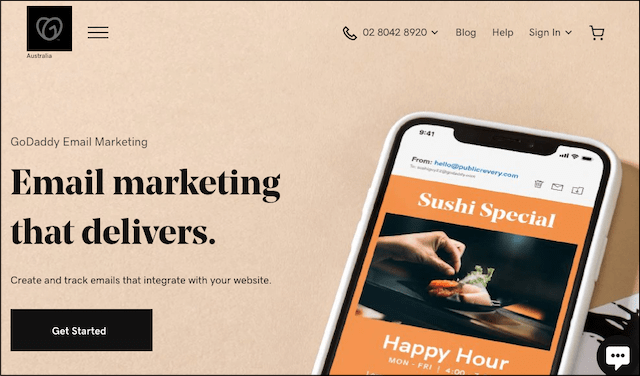Your customers, employees and suppliers need to hear from you now more than ever. Are you still trading? What changes have you made to your services? When can your employees expect to come back to work? But with at least three different groups to reach out to, it can be tough to know where to start. Saying the right thing to the right person at the right time can be neatly organised with a communications plan.
If the pandemic has taught us anything, it’s that our lives can be turned upside down overnight, leaving us scrambling to respond and recover.
Although no one could have planned perfectly for COVID-19, those who had a communications plan were one step ahead.
The good news is that, if you don’t yet have one, it’s not too late. Global crisis or not, a communications plan allows you to get more out of your marketing efforts and strengthen your relationships with customers, employees and suppliers. Plus, it’s one of the most straightforward plans to write.
In this post, we’ll show you how to create a communications action plan by the end of the day. Easy!
Related: COVID-related government grants you should know about
What to include in a communications plan
A simple communications plan can be split into two parts:
Strategy
This is the thinking part — the deep reflection of why your business exists and who you serve.
Action
This is where you lay out the who, what, why and how of your communication plan. Define each of these:
- Your goal (to inform, to prompt an action, etc)
- Audience
- Message
- Delivery method (email, text, etc)
- Owner (who will send it)
- Timing (when will it be sent)
By breaking your communications plan into sections, you’ll find it more manageable.
The strategy part of your plan

Photo: Andre Hunter on Unsplash
The word strategy can be confusing. Think of it as the deep-thinking part of the process.
The strategy component of your communications plan is what you’ll find in your strategic plan. But if you don’t have a strategic plan, don’t worry. By exploring the topics below as completely as you can, you’ll be ready to move ahead confidently:
- Describe your brand (casual, formal, young, etc)
- Define your audiences (age, location, etc)
- List all the ways you currently communicate with customers, employees and suppliers (e.g. email, text, social media, etc)
- Review your key messages (we’re open, new social distancing rules, online orders available, etc)
Scribble your answers to these four items on a napkin, in a Google doc or on a whiteboard — whatever works for you.
This first part may take some time because the answers require a little thought. But thinking through your strategy means that what you end up saying and how you say it will be consistent, clear and yield the results you want.
The action section of your plan
We all want to skip past the strategy part to get to the action, right? But while bypassing the strategy section is possible, it may lead to miscommunication. And that could cost your business money.
Think of communications planning like cooking an ingredient-intensive meal.
By gathering all the ingredients first and measuring what is needed, when it comes time to cook, everything is within reach and ready to go. Sure, you can prepare a meal by running back and forth to the fridge, but that’s wasted time and energy.
1. Purpose
First, think about your goal with this message. It may be:
- Specific, like letting customers know about your new trading hours or a change in product availability
- A general relationship-building message without a particular call-to-action
You’ll want a mix of both kinds of messages, but it’s important to be clear about what you want to achieve with each.
2. Audience
Who are you talking to? What you say and how you say it will vary depending on who will be reading your message. Consider your tone of voice as it may vary from one group to another. And remember, it should always align with your brand’s tone of voice. You wouldn’t want to suddenly go formal, when customers expect you to be casual (and vice versa).
3. Message
What do you need to say? For example:
- Telling your customers that you’re now offering home delivery is easy
- Informing them that your fees are increasing is harder
Every word counts. If you need help writing your message, a copywriter can help. But the most important thing to remember is to consider the reader.
Related: Key messages during a crisis
4. Delivery method
Now that you know what you want to say, it’s time to send it. Effective ways to reach those who are closely involved with your business include:
- Your website
- Social media
- Newsletters

If you need to reach a wider audience, and have a little more budget to play with, you may choose traditional marketing avenues like newspaper, TV or radio. High-value customers or clients might merit a personal phone call from you.
5. Owner
Who’s responsible for publishing the message? Although this may seem insignificant, sending the same message twice doesn’t look good. Not sending the message at all is just as bad.
If you’re a sole proprietor, the answer to this is easy. To minimise your workload, use an automated email marketing tool like GoDaddy’s Email Marketing and social media tools to pre-schedule your messages so you can get back to work.
6. Timing
Create a schedule. A schedule will make sure you’re not sending too many messages at once, a universal no-no. Also, consider what you’re sending — especially during a time of a crisis. Be sensitive, as many people will still be in crisis or recovering.
You have permission to be flexible with how you create your plan.
You can add and delete sections, write it on the back of an envelope or type it using lists and charts. Finding a universal template is tricky because every business is different. But you may find it helpful to refer to these communication plan examples to get started. As long as you include the six items discussed here, you’ll be on the right track.
When to use a communication plan

Photo: Toa Heftiba on Unsplash
A communications plan comes in handy when:
- You have a big announcement
- You’re launching a new product or service
- You want to talk to all or part of your internal team
- During a crisis
Yes, a crisis. Although no one can predict when a crisis will happen, having a recipe to follow will make communicating with your audience and key stakeholders easier. Just pull up the plan, refine it to suit the situation at hand, and off you go.
By preparing a communications plan for an event that you can control (like a product launch), reacting to an unplanned event will be easier because the framework is already set.
Time to write your plan
Plans are roadmaps that guide us. A communications plan will help you reach your target audience and achieve the outcome you desire.
If “communications plan” still seems a bit daunting, feel free to rename it and assign a focus that works for you. Other names include:
- Content mapping
- Media matrix
- Promotional plan
- Advertising campaign
Whatever you call it, deciding how you will engage with your audiences is part of a business planning arsenal that will help your business grow.





